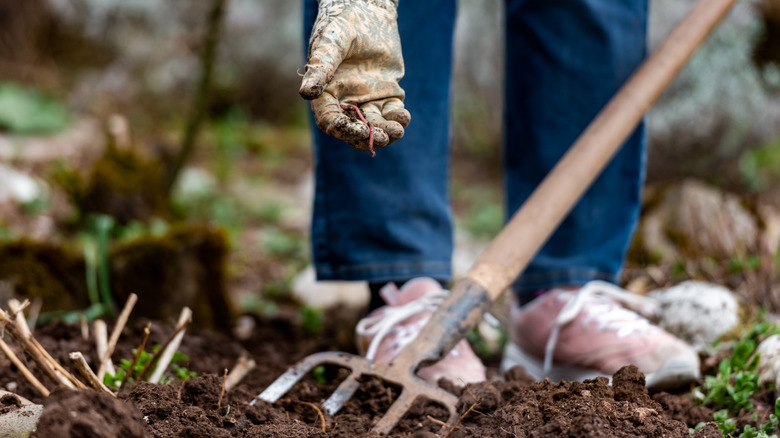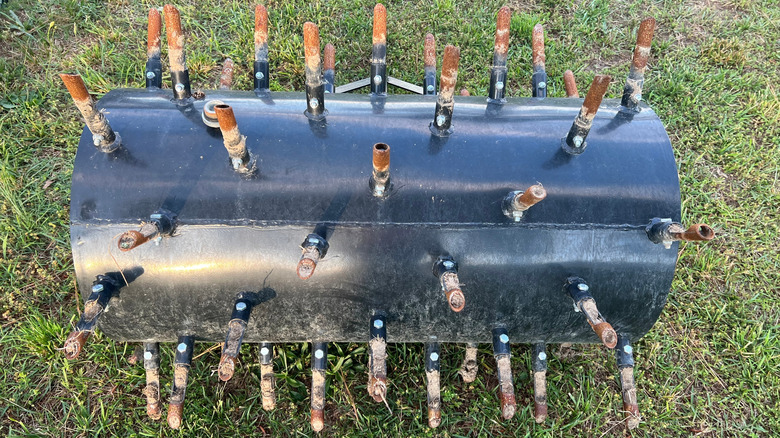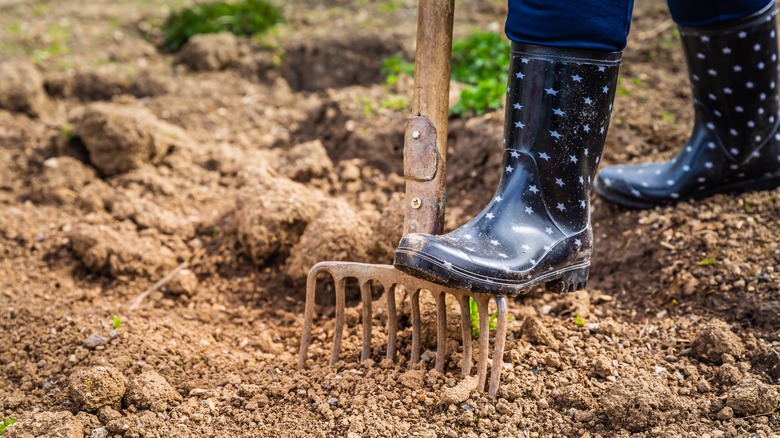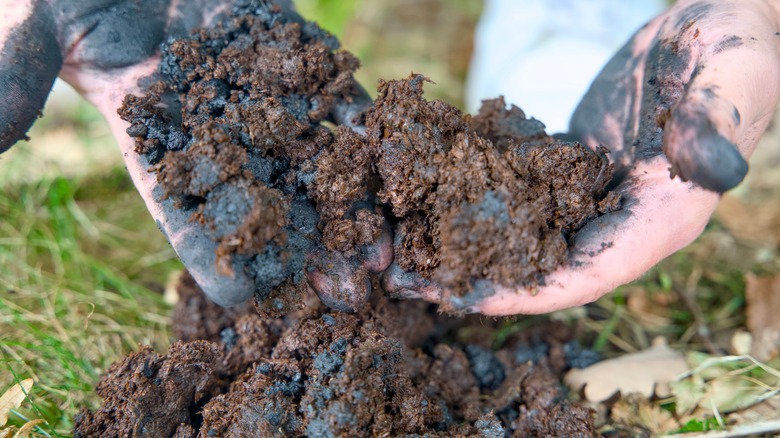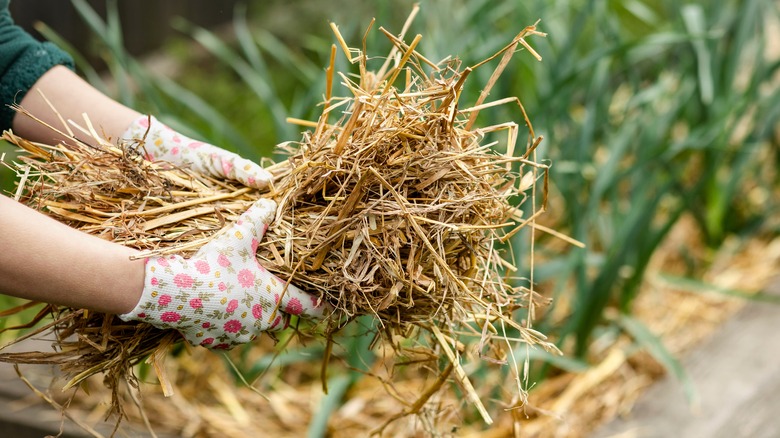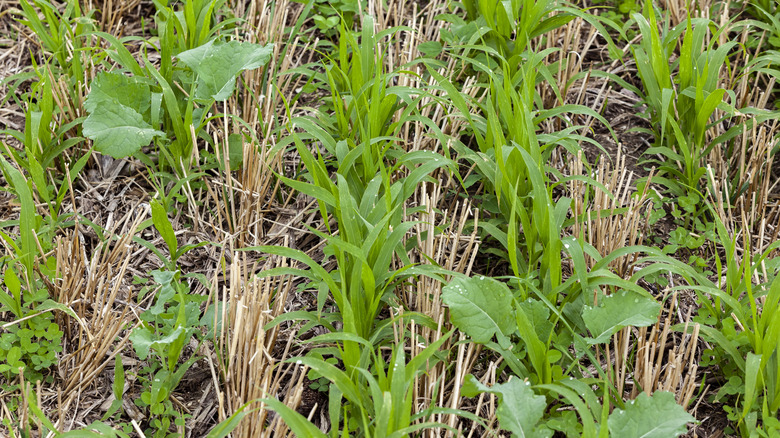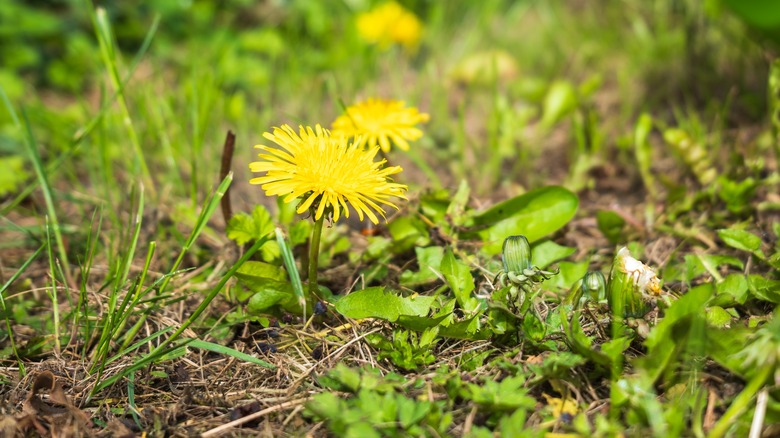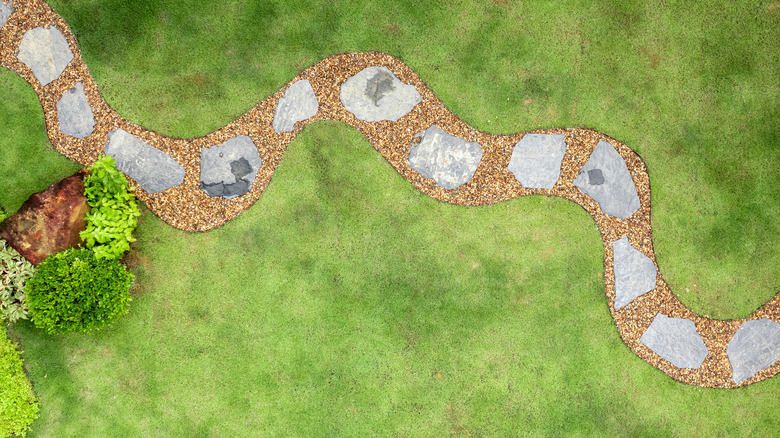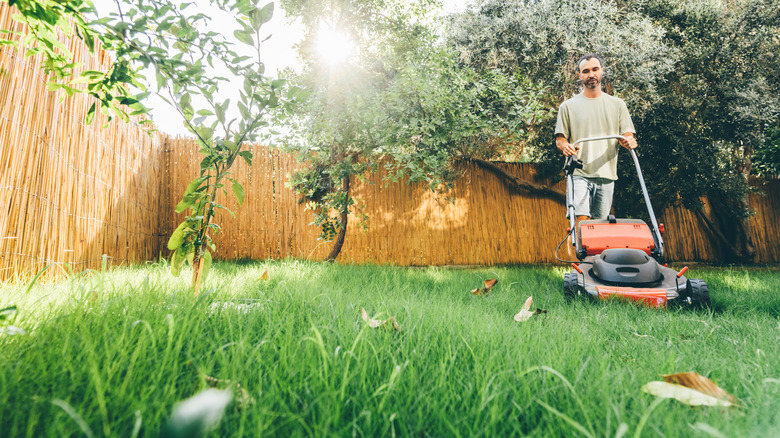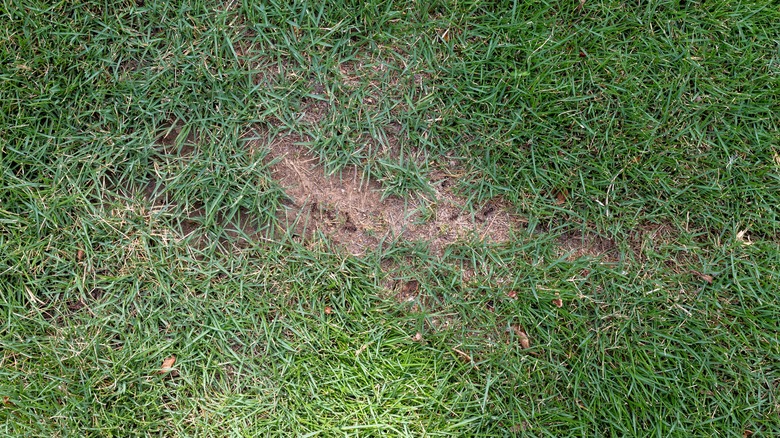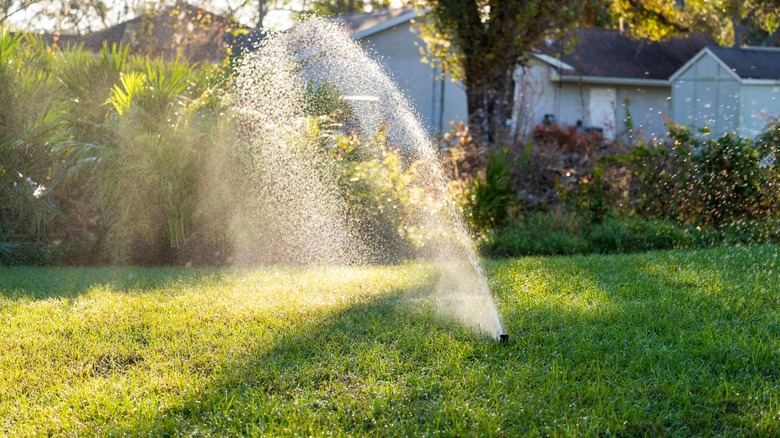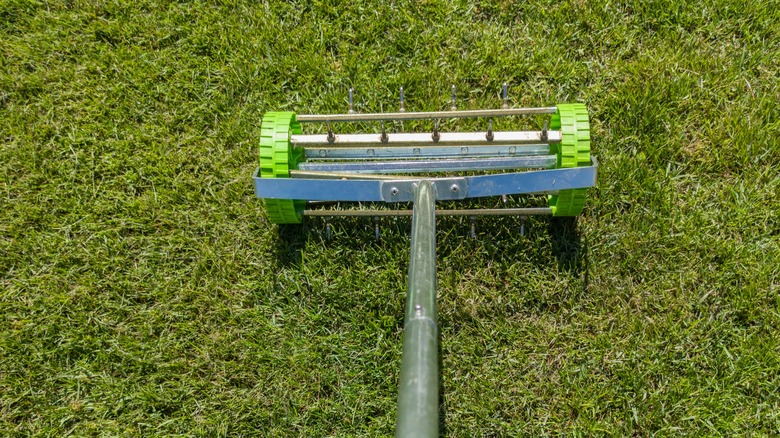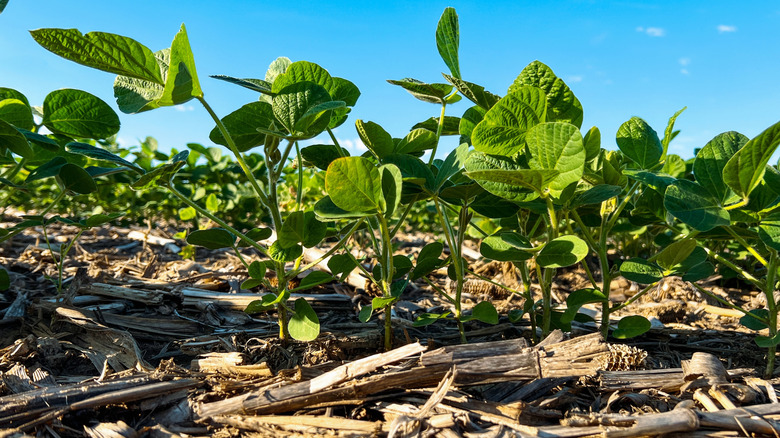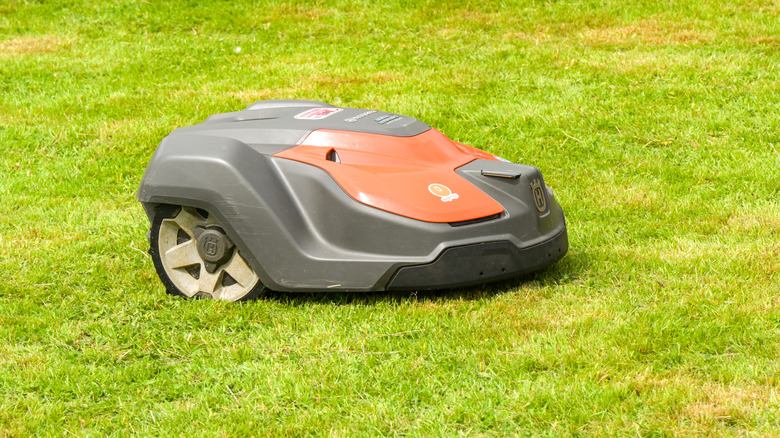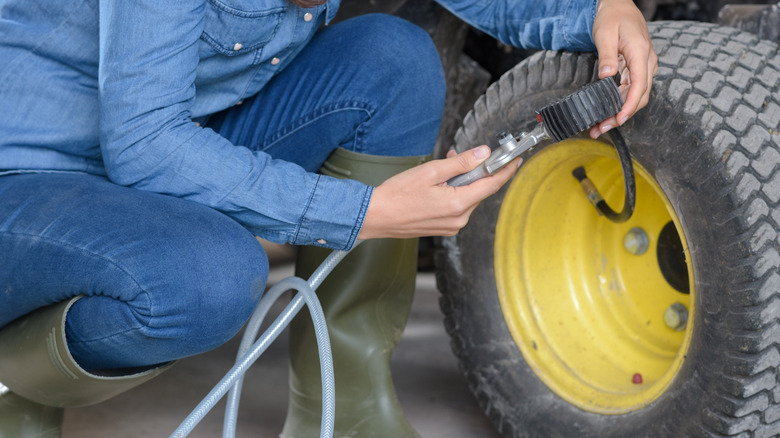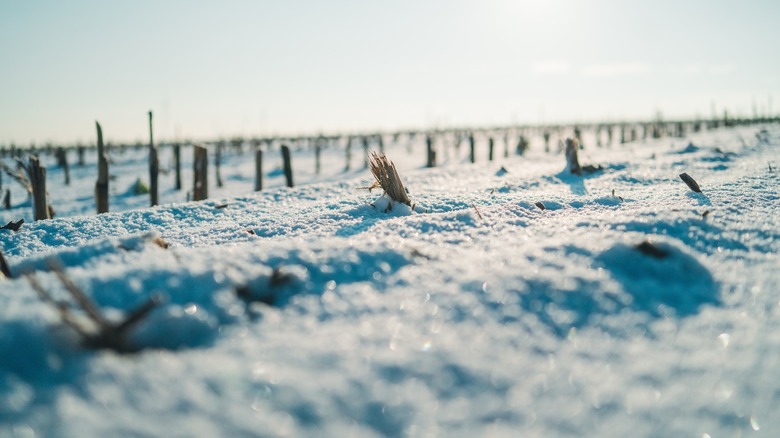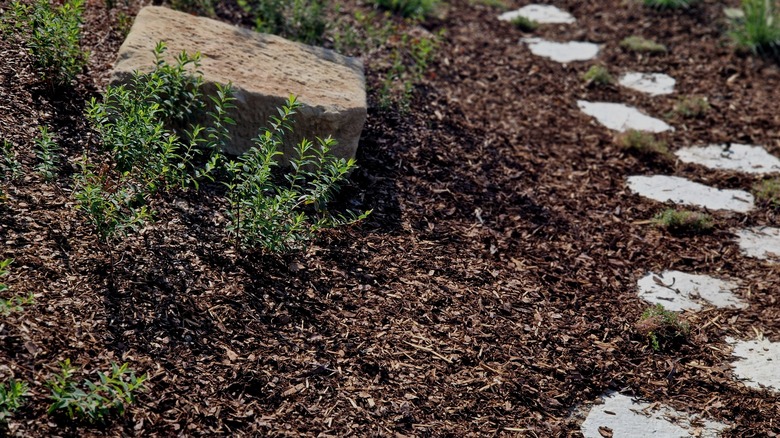16 Ways To Fix Compacted Soil For A Healthier Yard Or Garden
We may receive a commission on purchases made from links.
Compacted soil is one of the trickiest problems gardeners can face. At first it just looks like a firm patch of ground. But beneath that surface is a problem waiting for your plants. When soil becomes densely packed, air and water can't move through it freely, roots struggle to penetrate and spread, and beneficial organisms can struggle to thrive. If left unchecked, compaction can turn even the best-planned garden into a place where plants are stunted, stressed, or fail to thrive at all.
But before you give up the garden, there are ways to fix this without tearing your yard apart. From natural amendments to simple DIY solutions, we've got 16 different ways you can avoid a compacted yard or garden and restore soil structure so that roots, water, and nutrients flow. Whether you're tackling heavy clay, settled soil in raised beds, or potential planting areas worn down by foot traffic, these strategies can help your garden bounce back and grow healthier than ever.
Use a core aerator on your lawn (followed by topdressing)
Core aeration is one of the most reliable ways to break up seriously compacted soil. It works by removing plugs of dirt so that your yard is full of holes, opening up channels that let air, water, or nutrients penetrate more easily while giving open spots where roots can spread. It can also reduce thatch buildup, a problem that causes grass roots to suffocate. If your yard gets a lot of foot traffic, has multiple pets running around, or sees heavy mower usage, core aerating gives the soil a chance to "breathe" again and bounce back from the constant pressure pushing it down. The channels it creates also means that topdressed compost can penetrate and amend the soil at deeper levels.
Manual models, such as the Dolibest Lawn Coring Aerator, are easy to find and affordable. However for larger yards you may want to rent a motorized core aerator from somewhere like Home Depot, or hire a lawn service to come and do the task. Run the aerator in a criss-cross pattern when the soil is moist but not soggy. Fall or spring are the best times to use aerators, since your grass will be actively growing and can recover quickly. You can leave the soil plugs on top of the lawn and simply rake them out once dry. Then, follow up by topdressing with compost (this is also a great time to overseed).
Use a garden fork for smaller patches
If you're trying to work rock-hard soil in borders and beds, a garden fork is your friend. The tines will pierce the ground and break up dense layers of soil that block air and water from seeping in. This method loosens the soil without fully disrupting it the way tilling or digging it over might, giving roots a chance to expand while improving the drainage and increasing air and water penetration.
To break up compaction, drive the fork into the soil and rock it back and forth a few times to fracture the compaction, then pull it out. Besides using a regular garden fork, you can also try out a broadfork. Something like the VEVOR Broad Fork can help take a bit of the strain out of forking larger areas (like a big vegetable patch), as you can use your body weight to drive the tines into the ground and rock them up. One word of warning: While it might be fun and a good way to work out some frustration, don't overdo what's essentially stabbing your soil; too much can actually make compaction worse over time. Stick to an occasional forking for trouble spots and use less destructive options more often.
Add in some organic matter
Increasing organic matter content is one of the easiest and most beneficial ways to loosen compacted soil. Adding materials like compost, shredded leaves, or even aged manure are some old-fashioned ways to revive soil – these materials help to lighten dense dirt and create air pockets that improve drainage. They also boost microbial activity, which helps naturally combat compaction over time. Think of it like you're not fighting against stubborn soil, you're giving it goodies that improve its structure and resilience.
For best results, layer 2 to 3 inches of organic matter over the area, working it into the top 6 to 8 inches of soil. If you've got clay-heavy soil, make sure you reach this depth, as shallow layers won't be enough to encourage deep root growth. To keep up the good work, aim to repeat applications seasonally. Every new layer of organic matter enriches your soil even more, lightening it, and making microbes and roots happy.
Protect your soil with mulch
Mulch just isn't for aesthetics, it's also a useful protective shield against compaction. A layer of wood chips, straw, or bark (some of the best types of mulch for your garden or yard) will cushion the impact of foot traffic, heavy rain, or sprinkler systems and prevent this impact from forcing the soil down. The mulch spreads out the pressure, helping preserve air and water channels already in the soil. Plus, as mulch breaks down it can feed the good microbes in the soil that your plants need to thrive.
To get the full benefit mulch provides you'll need to spread a 3 to 4 inch layer evenly over the area, making sure not to pile it in clumps. Also, keep a small gap around stems or tree trunks so that you don't trap moisture and cause rot. In clay-heavy soils, it's best to keep beds mulched throughout the year to guard against compaction caused by heavy seasonal storms. Refresh the mulch as it decomposes over time so that you build healthy soil from the top down while preventing it from getting compacted again.
Plant deep-rooted cover crops
Deep-rooted cover crops not only create healthier soil but are like nature's own aerators, breaking through compacted soil layers as the roots grow. Plants like tillage radish (Raphanus raphanistrum subsp. sativus), rye (Secale cereale), or clover (Trifolium repens) send roots deep into the ground, creating natural channels for air and water. As the plants die back, their root pathways remain, leaving behind organic matter that has the bonus of improving soil structure. In agricultural settings, cover crops can outperform mechanical subsoiling in some cases, improving crop yields and long-term soil health.
To make cover crops work in your yard or garden, sow them in the off-season or between major plantings. Choose varieties best suited for your region and let them grow long enough to build root mass, then remove or turn them under before they go to seed. If you repeat this cycle a few times you'll probably notice your compacted soil has transformed into a looser, healthier growing medium.
Temporarily hold off on weeding
It will probably feel counterintuitive, but sometimes the best thing you can do for compacted soil is to let weeds do the work. Many common weeds, especially those like dandelions or broad-leaved plantain, have deep taproots that act like natural soil breakers. Like cover crops, their strong roots will push down into dense layers and create pathways for air and water. Once the weeds die back, the decomposed roots will leave behind organic matter that helps improve soil structure, too. Thanks, weeds.
Of course, you don't want weeds to completely overtake your yard, so you've got to be strategic. Leave a few of the more beneficial deep-rooted species to grow in compacted areas, then pull them or cut them back before they go to seed. You can also just mow them down and let the roots do the underground work while the tops can't compete as heavily with the plants you want there. This temporary truce can buy your soil time to recover and loosen.
Reduce the amount of foot or equipment traffic
Heavy foot or machine traffic is one of the most common ways soil gets compacted. Every step or wheel that presses down on moist soil squeezes out air pockets, leaving the ground denser and harder. According to the Colorado State University extension, walking over an area once can cause 75% compaction, and soil can reach 90% compaction by only the fourth time it's walked on. Once the soil becomes compacted, water will pool on the surface, roots will struggle to spread, and beneficial organisms may decline, creating a cycle that's tough to reverse.
But, look, you've got to walk around your yard, so what should you do? First, try creating designated pathways with stepping stones, gravel, or mulch so that traffic is limited to a dedicated area. If you need to bring in heavier equipment occasionally, wait until the soil is dry. Even doing small adjustments, like rotating access points or laying down boards for wheelbarrows, can spread out the pressure and give the soil a chance to stay loose.
Avoid mowing and working the soil when it's wet
Working in, or mowing on, wet soil is one of the quickest ways to create a compaction catastrophe. When the ground is moist, there is less friction to absorb the pressure from footsteps, wheels, or tools. Instead of gently compressing, the soil squeezes flat and loses the structure plants depend on for air and water flow. Even digging or tilling can backfire in these conditions, leaving behind clumps that dry into hard, impenetrable layers.
The fix is relatively easy because it's mostly about timing. Before mowing, digging, or running equipment, check the soil by grabbing a small handful and pressing it into a ball. If it sticks together instead of crumbling, it's still too wet to work. Wait until the soil dries out a bit before tackling your lawn or garden tasks. This small adjustment protects soil structure, keeps compaction at bay, and sets your plants up for healthier growth.
Patch bare spots with amended soil
Bare spots in a yard don't just look sad, they're also prime candidates for compaction. In bare areas, there's nothing to buffer the impact of foot traffic, rainfall, or even mowing. Over time, the soil gets pressed down further, squeezing out air pockets and reducing the ability for water and nutrients to penetrate. If left unchecked, these patches become stubborn zones where plants struggle to take hold, and the compacted soil just gets worse.
To fix it, you'll need to reset the area by adding fresh, amended soil rather than fighting with what's already been flattened. Dig out the compacted patch and work in several inches of topsoil mixed with compost or sand — this helps improve structure and drainage. Lawns usually need about 6 inches of loose soil for turf roots to thrive, while shrubs and trees may need up to 18 to 36 inches. Once amended, reseed, or replant and then cover with mulch to prevent the soil from compacting again.
Change your watering routine
Watering lightly and frequently is a recipe for compaction. When soil only ever gets a surface sprinkle, it encourages shallow root growth. Over time, the topsoil can also become hard, crusted, and hydrophobic, preventing water from penetrating deeper where it's really needed. Worse, runoff from frequent watering can carry away fine particles or organic matter.
To fix this, shift your watering routine from a light, daily douse with the sprinkler to a deep soaking two to three times a week. Make sure each watering of your lawn is long enough to penetrate several inches down by using a drip irrigation system or soaker hose because they prevent runoff and help water soak into compacted areas. Damp soil is typically softer than dried-out, compacted soil, which allows (and trains) roots to grow deeper, creating a more resilient, healthier yard in the long run.
Use a spike aerator for mild cases of compaction
Spike aeration is a quick way to tackle mild cases of compaction without pulling out the heavy equipment. Narrow tines punch holes in the soil, nudging it aside just enough to let in air, water, and nutrients. It can be a little bit faster and less disruptive than core aeration, making it handy for smaller areas or as a touch-up between deeper aeration treatments. For spots that just need a light refresh, spike aeration can give roots the breathing room they need to recover.
That said, you should know that spike aeration is more of a temporary measure than a cure-all. Since it presses soil to the sides instead of removing plugs, many argue it can actually lead to re-compaction over time. To get the best results, you should only use spike aeration sparingly and pair it with core aeration when you're dealing with moderate or severe cases. Treat it more like a "maintenance pass" than the main solution. You can buy manual spike aerators (including ones like the Ohuhu Lawn Aerator Shoes that strap onto your feet), or, in a pinch, try using a garden fork to spike channels into your lawn.
Try using no-till methods going forward
Some people get excited because no-till gardening sounds like less work (and who doesn't love that), but worry about its effectiveness. However no-till approaches can be effective long-term strategies for preventing compaction from creeping back in. Traditional tilling churns up your soil's layers, leaving them vulnerable to re-packing. Over time, this "tillage addiction" makes the soil reliant on constant disruption just to stay loose. By shifting toward no-till methods, you let organic matter, roots, and microbes rebuild the natural structure instead.
For a smooth transition, start with low-impact practices instead of quitting cold turkey. Use a garden fork to gently loosen the top few inches of soil without flipping or turning it, then layer compost and mulch over the surface so earthworms and microbes can work it in. In vegetable beds, try strip planting or wide rows where you only disturb the soil where you sow seeds. With each season, you should notice less crusting, better drainage, and looser soil that doesn't need to be tilled at all.
Use lighter lawn equipment
Big machinery like riding mowers may feel like they're saving you time, but they could be compacting your soil. Heavy machines and equipment exert more pressure per square inch of soil, squeezing it together. Over time, that pressure can build up into hardpan layers that roots struggle to penetrate.
When possible, try to use lighter-weight tools and machines, or change the path they take to prevent tracks of compacted soil. We know that some may think giving up their riding mower is a fate worse than death, but there are ways to still reduce your yard chores without getting behind a push mower. Smart mowers like the Ecovacs Goat O1000 both cost and weigh less than a riding mower — this one weighs under 45 pounds, and lets you automate cutting your lawn.
Don't over-pump your mower tires
You might think that inflating your mower or wheelbarrow's tires to the max is the safest bet, but over-pumped tires can actually make soil compaction worse. It comes down to surface area: The higher the air pressure, the smaller the tire's contact patch with the ground, which means more weight pressing down per square inch. That extra force can squeeze the soil, pushing out air and water pockets and creating compacted ruts.
To avoid this, check your mower's manual for the recommended PSI range and keep your tires within it rather than sticking to the maximum printed on the sidewall. Most lawn mower tires run between 10 and 20 PSI, but it varies by brand and model. Regularly checking tire pressure also prevents uneven wear and improves traction, so it's a win for both your lawn and your equipment. If you're mowing frequently in the same areas, pair this with changing up your mowing pattern to spread out the load and reduce compaction lines.
Use the seasons to your advantage
Sometimes, it's just really best to let nature do its thing because it can be one of your best allies for fighting compaction. In colder climates, winter's natural freeze-thaw cycles expand and contract the soil, breaking apart dense layers close to the surface. As water in the soil freezes, it expands and pushes particles apart; when it thaws, it leaves behind tiny gaps for air, roots, and moisture to move through more easily. Over time, this seasonal cycle can make a noticeable difference in loosening shallow compaction without you lifting a finger or tool.
To take advantage of seasonality, you'll need to avoid disturbing your soil too much in late fall and let the weather do some of the work. Bare areas will especially benefit from being left exposed to the elements, but if you're worried about erosion, you can cover them with a light layer of mulch. Just keep in mind that freeze-thaw alone won't undo deep compaction from heavy equipment, so pair it with other methods, like core aeration or cover crops.
Place well-positioned stepping stones in big border beds
Sadly, sometimes it's gardeners causing the compaction, during pruning sessions, weeding, or other tasks that cause you to tread in wide borders. Every time you step into a border bed, your weight presses the soil down and slowly squeezes out the air pockets roots need. Over time, it can create compacted strips that are hard for plants to recover from, even if the rest of the bed is healthy.
That's where stepping stones come in handy. By placing a few flat stones in strategic spots throughout large beds, you create designated pathways that focus the pressure in only those areas. Yes, the soil directly beneath the stones will compact, but that's a small trade-off compared to spreading the damage across the entire border. The stones also serve as a visual reminder to stick to those paths. Position them where you most often need to reach, like the middle of a bed or near tall plants, so you can prune, deadhead, or harvest without needing to stomp through the rest of your garden.
